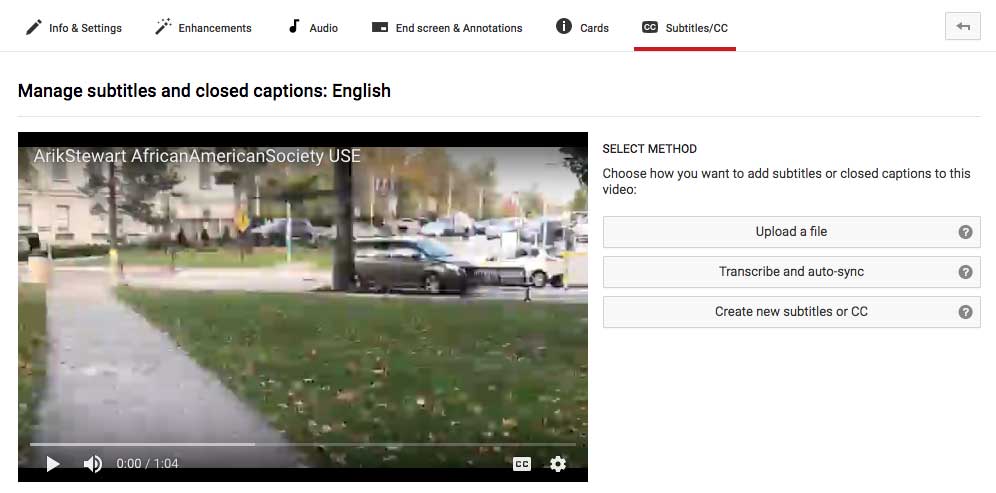Nearly three-quarters of U.S. adults use YouTube—a higher usage percentage than Facebook—and 94 percent of 18- to 24-year-olds regularly use the video sharing platform.
However, the sharing of video presents issues for people with disabilities, including those with visual and hearing impairments. Captioning and transcribing videos are critical to making them accessible.
But it also provides a better overall experience for all users. For example: You're in a crowded restaurant—or a quiet library—trying to watch a video. You can't hear the video because of your situation, but you still want to access the content.
Enter: captions.
Captions on videos not only allow people of all abilities to access your content, but they often lead to higher engagement as well.
Captioning YouTube videos
All videos on YouTube must be captioned. To do so:
After uploading a video, there is a “Subtitles/CC” option under editing. You have three options:
- Upload a SRT file, which the creator of your video should provide. Find out how to create an SRT file.
- Use YouTube’s auto syncing option (and then tweak the captions manually).
- Copy and paste from another document the transcription of the video.
In addition, you should provide a description along with each video for overall optimization of your video.


